PAINTING
Watercolor flowers
that glow

JAN KUNZ

www.artistsnetwork.com

Daisies
14 18(37cm 46cm)
Introduction
Watercolor is great fun. Anything that will hold still long enough is liable to become the subject for a watercolor painting. Flowers are an almost perfect subject. Theyre incredibly beautiful, they stay quietly where you put them for a long period of time, and they dont offer suggestions or comment on your painting skill. You can paint beautiful florals even if you dont know a peony from a petunia.
Thats the good news. Even better is the news that learning to really see the intricate forms and colors of the most simple blossoms will enhance your ability to see (and paint) everything!
Of course, its not all a garden of roses. Painting flowers takes patience and concentration. You probably wont find the time to solve world problems, and now and then, you may even forget lunch!
I wish I could tell you there is a simple one-two-three method for painting flowers. As far as I know, there isnt one. Each new variety or floral arrangement presents a new challenge. Happily, there are a few constants. Flowers have similar folds, ruffles, convex and concave shapes. So, if you learn to paint a rounded surface on a lily, you can paint a rounded surface on a rose or any other flower. The colors may vary, but the technique is the same. For that reason I have included a section in this book describing how to paint many of the recurring shapes youll encounter when painting flowers.
I know from experience that there are many of us who read the caption under the pictures and immediately begin to paint. However, those little paragraphs just wont hold all the information, so I hope you will read further. This book is filled with the basic techniques I have learned after years of painting for pleasure (and now and then for profit)!
Theres a great deal of excitement ahead, so turn off your cell phone and lets get started.


Bougainvilleas
22 30 (56cm 76cm)
1 CHAPTER ONE
Important Things to Know Before You Paint
You learn to paint by painting, and it takes time and determination to become a fine painter. You may have heard that watercolor is difficult to handle, but with practice you will soon learn to control this beautiful medium and witness magical things happening before you.
Of course you will have bad days. Even experienced watercolorists struggle with bouts of frustration and self-doubt. So if you have a problem, be kind to yourself. You are becoming an artist. No one is born with a full-fledged art gene.
Here are a few things to remember:
Dont compare yourself with other painters. You will never see their failures.
Try to paint when you are rested and have the time.
Dont let frustration keep you from painting.
Celebrate your victories and learn from your failures.

Supplies
Tool Checklist
SURFACE
 Arches cold-press watercolor paper
Arches cold-press watercolor paper
WATERCOLORS
 Cadmium Red
Cadmium Red
 Cadmium Red Dark
Cadmium Red Dark
 Rose Madder (Genuine)
Rose Madder (Genuine)
 Winsor Red
Winsor Red
 Burnt Umber
Burnt Umber
 Burnt Sienna
Burnt Sienna
 Raw Umber
Raw Umber
 Raw Sienna
Raw Sienna
 Cadmium Orange
Cadmium Orange
 New Gamboge
New Gamboge
 Cadmium Yellow
Cadmium Yellow
 Cerulean Blue
Cerulean Blue
 Cobalt Blue
Cobalt Blue
 Winsor Blue
Winsor Blue
 Winsor Green
Winsor Green
 Sap Green
Sap Green
BRUSHES
 inch (38mm) flat brush
inch (38mm) flat brush
 1 inch (25mm) flat brush
1 inch (25mm) flat brush
 Nos. 4, 6, 8,10,12,14 and 24 rounds
Nos. 4, 6, 8,10,12,14 and 24 rounds
OTHER
 Drawing board
Drawing board
 Sketchbook
Sketchbook
 2B drawing pencil
2B drawing pencil
 6B graphite stick
6B graphite stick
 Mat corners
Mat corners
 Frosted acetate
Frosted acetate
 Tracing paper
Tracing paper
 Craft knife
Craft knife
 Container for water
Container for water
 Paint rag
Paint rag
 Stapler
Stapler
Most watercolor books have a section to help you select the tools and materials the author recommends. If you have as many books as I do, you are already supplied. This section is aimed at the painter who is new to watercolor and needs to get outfitted.


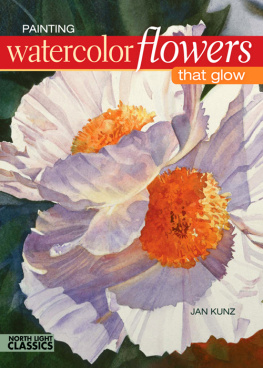

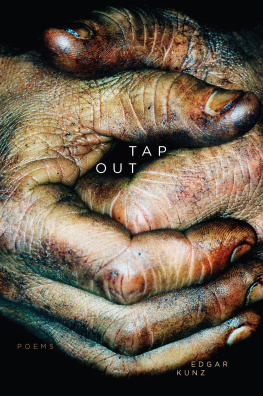



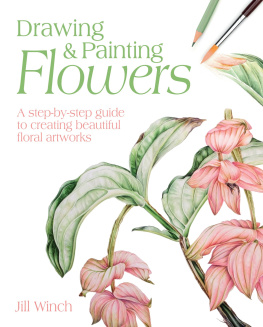

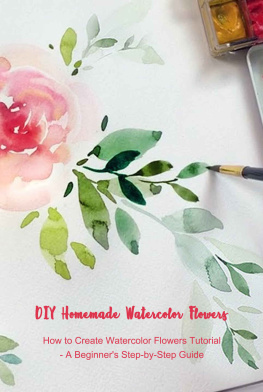

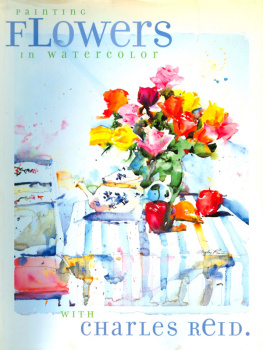
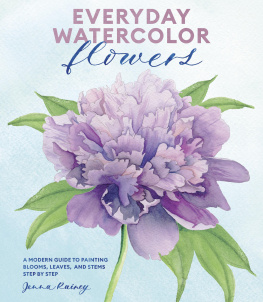
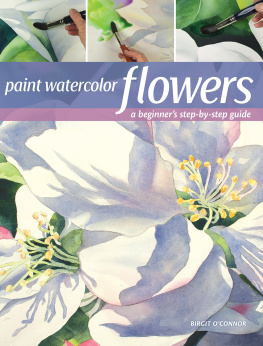







 Arches cold-press watercolor paper
Arches cold-press watercolor paper